Braking on cross-country skis by side sliding. Techniques and methods of teaching braking. Plow braking while moving
Cross-country skiing is one of the most popular winter sports. It differs from alpine skiing in the technique and equipment used. Anyone can learn to ride – it’s not difficult at all. In this article we will tell you everything.
Where is the best place for a beginner to learn to ski?
When choosing where to cross-country ski, choose a nearby park or a stadium. If no one has skied before you and there are no ski tracks, you will need to build one. It is better to choose not snow-covered virgin soil, but places with compacted snow, where sliding will be easier and the poles will not sink too much. Lay the ski track in such a way that you have one or two long (about 50 meters) but not very steep climbs along the way. When riding uphill, you will strengthen your muscles well.It’s great if you have the opportunity to practice at a ski lodge. The snow here is rolled by special machines, and the ski tracks are cut with a cutter. Neither bushes, nor hummocks, nor stones will interfere with you.
Cross-country skiing technique
First you need to warm up and warm up thoroughly. Stretch and tense all muscle groups in your legs and arms. Pay special attention to stretching your hips and legs, as well as warming up the joints of your legs and arms. This will allow you to better control your body movements.Cross-country skiing begins with mastering the correct stance: your knees, shoulders and feet should be in the same vertical plane. One of the common mistakes newbies make is using a “back stance.” The center of gravity shifts back, and the chances of falling and getting injured significantly increase.
To avoid falls when learning skiing techniques, you need to constantly imagine that there is something behind you that you cannot sit on under any circumstances. Bend your legs slightly at the knees, but do not move back - you should be able to see your hands. Press your elbows lightly toward the sides of your body. Fix the position and repeat it often. It is also important to learn how to fall correctly, and we will talk about this in more detail at the end of the article.
There are two main styles of cross-country skiing:
Classical. It involves all muscle groups - both lower and upper.
- Skating move. Mainly strengthens the internal muscles of the thigh and side of the body.
Today we will talk about the classic cross-country skiing stroke. Once you get on your skis and take the correct stance, try to slide a little. Just quickly move your legs forward one at a time, and you will understand how much effort you need to put in to slide. You will realize that moving forward requires tension in your legs. You can start learning cross-country skiing without poles.
To move, move your left leg forward and press down with your right leg. Don't try to push away, just push. Next, shift your weight to your left foot, lifting the second ski off the track. Your arms should follow the movements of your legs. If you start with your right foot, your right arm should be in front and your left arm behind your body. To continue the movement, push off with your left ski and continue sliding. Having caught the rhythm, the sliding process will become much easier.
When you learn to slide confidently on the snow, take poles. Starting the movement by pushing your right foot into the snow and transferring your weight to your left, stick your left pole in and push - you will accelerate. When pushing off with your left foot, accelerate with your right stick. When moving, stick the stick closer to yourself and do not extend your arms.
When you come across a small hill on the way, climb it in a herringbone pattern. Turn your toes out and keep your ankles in to help the edges of your skis dig into the snow for better traction. Maintain balance with the help of sticks, transferring part of your body weight to them.
Having climbed a hill, you will have to go down from it. Lean forward, but not too much, otherwise you may lose your balance. At first, point the ends of the skis so that they stick into the snow with the nearest edge, and slowly descend in small steps.
How to learn how to turn and brake on skis
It is impossible to learn how to ski safely without learning how to turn, brake and fall correctly.Turns
Learning to turn is not difficult, but you need to practice by mastering the basic techniques. When driving on flat surfaces or gentle slopes, you can use the step-over turning method. To turn left, you need to transfer your body weight to your right leg, put your left leg at an angle to the side, and pull your right leg towards it, etc. Don't place your ski at a strong angle to avoid falling, and to turn quickly you just need to step over more often.Braking
The most popular method of braking on cross-country skis is the so-called “plow”. To slow down or stop, you need to straighten your legs springily and, moving your body weight from your heels to your toes, spread the rear ends of the skis with strong pressure. They will be on the inner ribs, and the socks will be aligned. In this case, you need to bring your knees together, distribute your body weight on both skis and lean back slightly. To increase braking, you should move your skis further and place them more on the edges.How to fall correctly when skiing
Regardless of skiing style, every skier should be able to fall correctly, so if you decide to go cross-country skiing, make sure you are familiar with proper falling techniques.When learning to cross-country ski, it is important to practice several techniques that will make riding safer and more comfortable. It is better to fall on your side, spreading your arms wide. When falling, it is necessary to tense your muscles, which will prevent rotation on slopes, and on a flat surface will protect you from injury. It is necessary to practice falls several times, learning to control them. Source -
Types of braking on skis .Braking when going downhill is a necessary measure to reduce speed. Typically, cross-country skiers travel the course without braking. Braking has to be resorted to in the event of an unexpected obstacle, a fall of the competitor in front, interference from spectators, due to poor preparation of the track or an insufficient level of preparedness of the athlete.
Plow braking It is used on slopes of various steepness, on hiking trips and on walks. This is the most effective method, which allows you to significantly reduce speed on a slope or even stop, but it is rarely used in cross-country skiing - the strongest skiers practically do not use it.
Plow braking is performed as follows. When descending in the main stance, the skier springily straightens his legs at the knees and, slightly “throwing” his body up (relieving the pressure on the heels of the skis), with strong pressure, sliding the skis with his heels to the side. The skis rest on the inner ribs (edges of the skis), and their tips remain together; the knees are brought together, the body weight is distributed evenly on both skis, and the torso is slightly leaned back, and the arms take the position as when descending in the main stance. Increasing the angle of the skis and placing them more on the edges significantly increases braking.
Braking training is carried out according to the generally accepted scheme (story - demonstration - explanation), then students imitate movements in this method of braking. First, out of the blue, after showing and telling, schoolchildren take a working position several times (the “plow” position) and perform springy half-squats. The teacher checks the correctness of the accepted position. Then, on a moderately steep slope, students take turns braking, taking a position immediately after starting to move at the top of the mountain, and maintaining this position until the end of the descent or until they stop.
Having mastered uniform braking, you can move on to regulating the braking force by spreading or bringing the heels of the skis together. Next, they improve braking on the mountain, marked with landmarks that indicate the part of the slope traversed without braking, the place of its beginning, end or complete stop. By changing these distances, you can make the task more difficult or easier, depending on the preparedness of the students.
Then the students perform braking at the command of the teacher. Gradually, you can move on to improving braking on steeper slopes and on descents with changing terrain. When studying this method of braking, schoolchildren most often encounter the following:errors : crossing ski toes; skiing flat, not on the edges; uneven pressure on both skis, which leads to a change in direction of movement; insufficient spread of ski heels; knees are slightly bent and not brought together, etc.
To correct mistakes, take the “plow” position again several times on level ground. Further, “plow” braking is repeated and improved on slopes of varying steepness, with changing terrain and varying depths of snow cover. You should pay attention to firmly holding the skis in the “plow” position, especially the toes, in order to avoid them colliding with each other.
Stop braking
more often used when descending obliquely. The skier transfers his body weight to the upper (sliding straight) ski, and puts the lower one in the stop position: the heel is to the side, the toes are held together, the ski is edged on the inside edge. Increasing the angle of abduction and tilt of the ski increases braking. Throughout the entire braking, the body weight remains on the ski sliding straight (top), although a partial transfer of body weight to the ski that is in stop will lead to a change in the direction of movement, i.e. to turn with emphasis. This method is sometimes called “half-plough” braking.
Students who have mastered plow braking well usually easily master stop braking. When studying this method, you must first imitate the movements while standing still, taking the described positions several times. The learning methods and errors encountered when braking with a stop are similar to the errors encountered when braking with a plow. In the future, schoolchildren must master braking on slopes in both directions (from different legs).
Braking by side sliding (turning skis) used when the athlete needs to stop and go further down the slope, achieving lateral sliding by edging the skis.
Braking is performed as follows. When descending obliquely, the skier squats slightly, then straightens up with a rather sharp push forward, removing the load from the skis, placing them flatter and moving the heels of the skis to the side with a lateral movement of the ankle joints. This is helped by the counter rotational movement of the torso and shoulders, as well as additional support on the stick. After moving the backs of the skis to the side, the amount of braking force depends on the angle of the skis: for sharp braking or even a complete stop, you need to place the skis across the slope and steeply on the edge. To study side-slip braking, lead-in exercises are used to turn on parallel skis from a stop. When teaching girls this method of braking, it is necessary to avoid very steep slopes.
When driving down a slope at high speed and unexpectedly appearing obstacles, it sometimes becomes necessary to brake sharply or even stop. If the distance to the obstacle is too short, the only way to prevent a collision isdeliberate fall . A controlled fall will reduce the possibility of injury and allow you to quickly get up and continue moving. Before falling, you need to sit down and then fall (gently “falling”) back to the side - on your hip and on your side. At the same time, the skis should be turned across the slope. It is better to scatter your hands with sticks up the slope. From this position, sitting down and then leaning on poles, it is easy to get up and, turning your skis, continue moving down the slope.
If the skis are crossed when you fall, you need to turn over on your back, raise your legs up and bring the skis to their normal position. Then turn over on your side again (skis across the slope) and stand up. In exceptional cases, when braking with skis is impossible (on a hiking trip, on a walk - in deep snow cover), and falling is impractical, skiers can use pole braking (one on the side, two on the side, two between the skis). These methods will help to slightly reduce the speed in case of unforeseen circumstances. In cross-country skiing, such braking methods are not used.
Ski braking is used to regulate the speed of descent and stops by placing the skis on the edges at an angle to the direction of movement. The braking force depends on the angle, the degree of edge of the skis and the pressure on the snow. Depending on the direction and conditions of the descent, you can brake using a plow or side sliding on straight descents, as well as a semi-plough (stop) or side sliding on oblique ones. While recommending certain methods of braking, we, however, do not limit skiers from using them at their own discretion.
Braking, especially at high speeds, takes a lot of effort. Therefore, they are most often short-term, and the skier selects the most suitable one. Of all the techniques, side slides on parallel skis are the most effective. But they are not always applicable. Therefore, we will consider different methods of braking.
Plow braking. In the plow, the skis form an angle with the heels spread out to the sides. The bisector of this angle coincides with the direction of movement, which is achieved on a straight descent by evenly loading the skis. The plow compacts the snow, cuts it and moves it, increasing friction and causing braking. The magnitude of the braking forces is determined by the width of the plow and the degree of ski tilting.
To make it easier to place the skis in the plow position, they are unloaded using a jump (Fig. 35). Typically, placing the skis on the edges corresponds to the angle of the plow, but options due to lateral movements of the knees and feet are also acceptable. Since holding the plow requires a lot of muscle tension, it is recommended, if possible, to keep the foot, shin and thigh in the same plane, perpendicular to the sliding surface of the ski.
Rice. 35. A slight jump (unloading the skis) makes it easier to accept the plow
To better maintain the position of the plow, the skier's body should be straight, the ends of the poles should be spread apart. With strong edging, the ski tips tend to move apart, which reduces the braking effect. When the skis are set flat, on the contrary, the toes come together more easily, but braking is also reduced. Therefore, it is necessary to skillfully adjust the angle of attack (edging) so that the skis can crush the shifted snow and at the same time achieve the maximum braking effect.
When going down in the plow, by reducing the pressure and edging, you can return the skis to a parallel position, but to get out of the plow faster, it is advisable to jump.
It is useful to start mastering the plow with imitation exercises on level ground, spreading and bringing the heels of the skis apart with each jump. In this case, it is necessary to ensure that the legs, if possible, do not occupy an X-shaped position, but bend and unbend at the knees in the direction of the toes of the skis.
When practicing the plow in motion, pay attention to the symmetry of the track and the clarity of transitions from one position to another (Fig. 36). Finishing the exercise with a stop on the slope, you should vigorously transfer your body weight to one of the skis with the heel slipping sideways and turning it across the slope. The upper ski is placed in a parallel position.

Rice. 36. Unevenness in the loading and tilting of skis in the plow leads to sliding towards a flat-lying and less loaded ski
Stop braking. Unlike a plow on a straight descent, resistance to movement at stop is provided by only one ski, placed at an angle to the direction of movement. Let's call it a stop ski: its heel moves away, it moves forward slightly and turns onto the inner edge. The other ski, also slightly edged, carrying most of the skier's weight, will be the lead ski. As the heel moves away, the back ski receives additional load and begins to cut off a layer of snow, tending to turn, and the leading ski, due to its edge, counteracts it. The ratio of ski loading and tilting depends on the need to create a particular braking force and the condition of the snow.
When pushing, the torso is mainly above the leading ski and the supporting leg is bent more than the supporting leg. The poles are held according to the position of the skis (Fig. 37).

Rice. 37. Stop braking
Stop braking in an oblique descent differs from braking along the slope line and is usually carried out by the lower ski. Here, the body weight is first transferred to the upper ski on the slope in order to create counteraction to the lower ski, which is pulled back at point-blank range. To achieve the desired braking effect in certain conditions, the leading ski can lie flat or even be edged on the inside edge. The steepness of the slope and the direction of descent will be the deciding factors in this case.
On gentle slopes it is sometimes convenient to brake with the top ski. The skier's posture and the position of the skis are very similar to a plow on an oblique slope.
In the process of improving the plow and stop, the skier must learn, by manipulating his weight and the tilt of the skis, to freely move from one method of braking to another, taking into account changing conditions of the descent and minimal fatigue.
Imitating resistance exercises on the spot helps you quickly master them. Combinations with elastic flexion-extension of the legs, stops with the upper and lower skis lead the skier to the next stage - mastering turns on parallel skis in various ways, in particular entering the turn from a plow or stop.
Lateral slip. Side-slip braking on parallel skis is used in both straight and oblique descents. It is better to practice lateral sliding on a relatively steep slope from a traverse position; it is enough to lower the valley edges of the skis and the downward lateral movement will begin - it is called lateral sliding in contrast to sliding. In such slides, the feeling of edge and loading of skis along their length is worked out. In the section on the interaction of skis with snow, we already talked about the influence of the edge angle and ski loading on the movement during a side slide. It would be appropriate to repeat here: a flat-lying ski will slide down faster with the loaded part, and an edged ski will do the opposite: the loaded toe or heel will slow down more strongly, and the unloaded part will slide down. Only after having practiced well in place, it is advisable to move on to practicing sliding while moving.
In order to place the skis across the movement of the straight descent and force them to slow down by sliding, the skier eases them by flexing and extending his legs, giving rotation to his legs and skis. For faster action, a good skier only needs one flexion - in a moment of relief, his legs rotate the skis (or shift his heels), and his torso turns compensatory with his chest away from the slope. This technique requires less space and time than extension-flexion (Fig. 38).

Rice. 38. Transition from free descent to side-slip braking
With the skis positioned across the stroke, sliding is replaced by lateral sliding with braking, which forces the athlete to take the corresponding position with lateral bending; First, the upper ski is more loaded, and then the lower one. When stopping, the skier can lean on the lower pole to avoid capsizing.
To transition to side sliding in an oblique descent, simultaneously with a flatter setting of the skis, their heels are shifted under the slope, and the torso compensatory turns even more with its chest into the valley. The greater the heel offset and the stronger the edge, the more vigorous the braking. The skier's attention is focused on loading the skis so as not to go from slipping obliquely into a turn towards the slope or, conversely, down the slope.
The side-slip stance is very close to the oblique descent stance, it differs only in the lower edge of the skis, which increases sharply at the moment of stopping.
The perfection of lateral sliding (Fig. 39) is demonstrated in the picture by one of the luminaries of alpine skiing in the recent past, Otmar Schneider (Austria). By reducing the edge of the skis during a turn on parallel skis, he adjusts the curvature of the arc in order to bypass the shaft at the desired point and at the desired angle.

Rice. 39. Edging the skis during the main phase of the turn leads to lateral sliding, as when descending obliquely
Going down the hilly slopes, worn out by “tourists”, the master, using lateral slips interspersed with sliding, masterfully overcomes them. The improvement of combination techniques is truly limitless. This is how one of the varieties of freestyle was born - descending a hilly slope. The ability to combine sliding and side sliding is useful for all athletes, as well as judges involved in the preparation of courses.
Exercises in oblique and straight slips in combination with sliding, lateral heel drops with “cutting” edges and other techniques require precise work of the knee and ankle joints. There are many options here. It is very important for a skier to be able to measure lateral displacement with longitudinal sliding, to learn a subtle perception of the deformations of the snow under the skis. So, if a side slip occurs on heavily edged skis, then it is advisable to call it a “hard slip”, and if on skis lying almost flat, it is called a “soft slip”. In the first case, the braking will be noticeable, in the second it will be more like smoothing snow with less loss of speed.
When learning lateral slides, you must always remember that they are auxiliary techniques that make it easier to overcome slopes in some critical situations, and make the mechanism of turns on parallel skis more versatile.
I would like to emphasize that at this stage of mastering slipping and sliding, the student’s abilities and athletic prospects become especially visible. The ability to slide, the feeling of snow, dosed loads, balance - these are elements of talent. We must not miss the opportunity to “grope” for techniques that are easily learned by the student, to take into account his personal qualities: the predominance of cowardice over courage, passivity over activity, inertia over aggressiveness. This is how the foundation for further specialization is implicitly laid.
By how boldly a skier moves from sliding to side sliding, vigorously placing his skis across the stroke and vice versa, you can see what he is capable of. However, this does not mean that we should immediately give up on the “weak” - many qualities are profitable if you develop them, as they say, wisely. Even the boundaries of innate courage are expanding - it grows with technical improvement.
The coach should also remember that a combination of sliding and sliding elements will constantly be encountered when mastering turns on skis. Among the most commonly used are the transition from soft sliding to sharp edging in pre-turns or when stopping at the end of an arc. Mastering the transitions from straight descents to braking or turning will teach you to feel the effect of the inertial forces that arise during this: in braking - from a decrease in speed, in turns - from centripetal acceleration. Therefore, you should not sit too long on braking exercises, but boldly move on to the next stage.
Braking
Mastery of all braking methods allows you to intelligently regulate the speed of descent and quickly stop in the desired place.
Semi-plough braking (one-sided stop) is practiced mainly when descending obliquely down a slope. To brake, the heel of the ski, located lower down the slope, is moved to the side, and the ski is placed on its edge; the second ski glides in the direction of travel.
For sharper braking, it is necessary to press the heel of the boot to move the back of the lower ski even further, place it steeper on the edge and increase the pressure (Fig. 86).
Rice. 86. Half-plough braking (one-sided stop)
Plow braking (double-sided support) is used on slopes of medium and low steepness during straight descents: holding the toes together, spread the heels of the skis to the sides and place the skis on the inner ribs, which is achieved by bringing the knees closer together and transferring the weight to the heels. To increase braking efficiency, you should move the ski pads further apart and place them more steeply on the inner ribs (Fig. 87).

Rice. 87. Plow braking (double-sided stop)
Braking with poles is used when descending obliquely to a slope or during a straight descent. To do this, you need to stick the poles folded together with their pins into the snow and, increasing the pressure, slow down the movement. The hand closest to the slope clasps the stick from above. and the other is below (Fig. 88). Braking with poles between the legs is not advisable for a number of reasons, including the possibility of breaking the poles.

Rice. 88. Braking with sticks
Stopping by falling is used in emergency cases when you need to quickly stop the descent. To do this, you need to squat down as low as possible and fall to the side, throwing your arms and poles back, spread out, put your skis across the direction of descent and, resting them on the snow, slow down further sliding. A typical mistake is falling without first grouping the body, which can lead to bruises (Fig. 89).
SKI BRAKING METHODS
Braking is applied when it is necessary to reduce speed or to
full stop. The main methods of braking include: braking by changing the descent stance, “plough”, “half-plough”, stop, side sliding, braking with sticks.
Braking by changing the descent position. This method is used when rolling out when descending from mountains by changing the stance. For example, a skier moves from a low stance to the main one, and then to a high one, changing the angle of flexion of the legs at the knee joints and straightening the torso.
Plow braking. This method is used for straight descents on gentle slopes. Braking is carried out evenly by two skis. The skier places them on the inner ribs with the heels spread out to the sides. The outer ribs are slightly raised. The knees come closer together, the heels of the boots press on the skis. The more the skier tilts his knees inward, bringing them closer together and lowering them, the steeper the skis are placed on the edge and the stronger the braking.
The same thing happens when the heels of the skis are spread to the sides: the wider the “plow”, the stronger the braking. The angle of the skis and their loading depend on the speed of the skier on the descent, the required braking and the nature of the snow cover.
Half-plow braking is a type of plow braking. It is used only on gentle slopes, on the plain or rollouts from slopes and if there is
ski tracks It is carried out as follows: one ski remains in the track, the other performs the same movements as when braking with a “plow”.
Stop braking. This method is used when descending obliquely or on a flat, rolled slope, as well as for making a sudden stop on the plain.
When braking on the plain, the body weight is transferred to the inner ski, and the outer ski is sharply pulled to the side with the heel and turned over.
The tip of the outer ski is pushed forward a little, the skier turns around, and after the turn, the inner ski is placed next to the outer ski.
Side slip braking. This method is used on steep slopes and when descending obliquely.
When descending from a slope, they squat slightly, then straighten up sharply and move the heels of the skis to the side with a lateral movement of the ankle joints. This is helped by the counter rotational movement of the torso and shoulders, as well as additional support on the stick. The amount of braking force depends on the tilt of the skis. For sharp braking or even a complete stop on a steep slope, you need to place your skis across the slope and steeply on the edge.
Brakingwith sticks. This method is used only at low speeds. The skier pushes the poles forward with a sharp blow, as if pushing off from them. The hands are slightly further apart than when performing ski moves.
| Braking by deliberate fall. This is an emergency braking method. It is used in exceptional cases when an obstacle unexpectedly appears on the descent and the distance to it is too short. The way to fall safely is as follows: before falling, you need to sit down, and then fall, as if sequentially sitting in the snow backwards - to the side - on your hip and on your side. At the same time, the skis should be turned across the slope. Stretch your arms to the sides, throw the rings of the sticks back. |
|
| Drop braking: a - fall; b - getting up |
There are several ways to get up after a fall: 1) sit down, bend your legs, lean on poles and, holding your skis on the edges across the slope, stand up; 2) with one hand grab the handles of the poles, with the other - the poles at the rings (toes), push off and stand up; 3) place the skis parallel, push off the slope with your hands and stand up.
If the skis are crossed when you fall, you need to roll over onto your back, raise your legs up and bring the skis to their normal position. Then turn over on your side, place your skis across the slope and stand up.


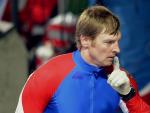
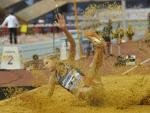
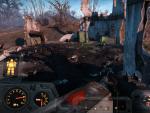
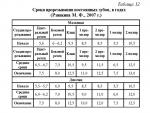


 Mudra of wealth “Sea Scallop”!
Mudra of wealth “Sea Scallop”!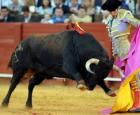 Spanish bullfighting and bullfighting shows in other countries
Spanish bullfighting and bullfighting shows in other countries Ustyugov refused the Tour de Ski
Ustyugov refused the Tour de Ski Why remove gills from fish for soup?
Why remove gills from fish for soup?